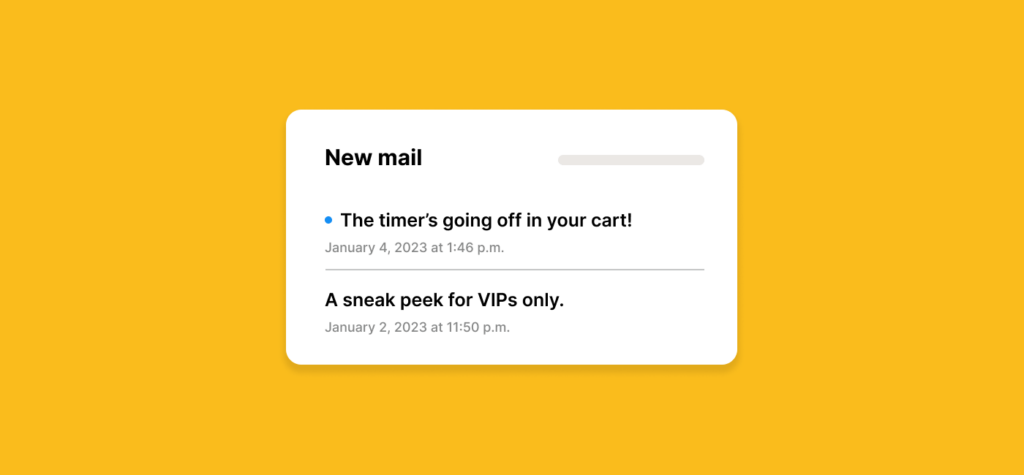So long, RFPs! Make better purchasing decisions with a proof of concept
6 Minute Read

Chances are if you’ve worked for an enterprise company, you’ve heard the term request for proposal, or RFP. For the past two decades, the RFP has been the de facto way that enterprise organizations (and often small businesses) make major software purchasing decisions. For many people who have experienced them, the term RFP triggers flashbacks of weeks of meetings and hundreds of pages of dense jargon. The worst part is, sometimes the process is so frustrating that the whole exercise is scrapped for the status quo.
The good news: there’s a different—and better—method called the proof of concept (POC) that is both more effective and less resource-intensive. In this post, we’ll break down five ways the POC wins against the RFP and hopefully convince you to never endure another RFP process again.
First, a look into the RFP process
The RFP is a way of making purchasing decisions that requires an untenable amount of work from your team and all of the vendors you invite to participate, and more importantly, it makes it difficult to understand what you are actually purchasing. RFPs are lengthy documents (think 50-100 pages) that break down a piece of software into its component parts. This level of granularity, although important, misses a key point—how do all the pieces actually work together, and how does the product help you accomplish your goals on a day-to-day basis?
Additionally, the actual process of creating an RFP can be both time-consuming and frustrating. The very nature of the RFP requires a committee or various stakeholders from different departments, all with varying opinions and motivations. Depending on the size and complexity of your organization, this can result in weeks, if not months of meetings and email chains. Once your RFP is complete, you send it to the vendors your company is considering, sometimes before even having a conversation with them.
Once you have the responses from each vendor, which can take a few weeks, you then need to analyze them. Let’s say you invite five vendors to fill out your 50-page RFP. You now have 250 pages of technical jargon to weed through to try and piece together their offering. This is before you ever talk to them, see their software, get a sense of their team, and learn their product vision. When you do finally make a decision, you may find that the vendor embellished a few of their answers and you cannot, in fact, do what you need to do. Now you’re locked into a contract, can’t achieve your desired results, and are left feeling oversold. Seems like a giant waste of time, doesn’t it?
Decrease time to value with a POC
Fortunately, there is a much simpler, better way to make purchasing decisions. The POC improves on the request for proposal model in almost every way. Instead of asking multiple vendors to fill out a lengthy questionnaire, you can actually use the software in a controlled environment. A POC is a collaborative process between the vendor, your organization, and all purchasing roles, to align on key use cases and success metrics—whereas an RFP is transactional by nature. Here are five reasons why you should consider ditching the traditional RFP for a POC:
Get hands-on time with the product
One of the most valuable aspects of a POC is that you actually get to use the product before you sign on the dotted line. A POC enables you evaluate the usability of the platform and make sure that it can actually accomplish your business-specific use cases. If you are engaged in an RFP process, you need to guess whether or not the product can do what you need it to do based on the vendor responses. There is simply no substitute for using the product yourself. Often times the vendor you are proofing will also assist with onboarding and training, which ensures you can make use of advanced features and functionality.
Immediately see value (or lack thereof)
Once you have access to the product and your team has been onboarded and trained, it will be quickly become apparent whether there is a fit. Often times it only takes a couple weeks to get a sense of the features and functionality and if they will meet your needs. With an RFP, it can be months before you ever use the product, and sometimes over a year to fully onboard. During this time, you’re stuck with your current solution and hoping that the new product will meet your needs. If you discover during the POC that the product doesn’t meet your needs, you’ll be able to confidently move on to the next vendor and know for certain that it was the right call.
Evaluate support services
During a POC, you’re not just evaluating the product, you are evaluating the entire company. Not only are you able to use the product but you can see first-hand how the team handles training, onboarding, support tickets, and strategy. It’s one thing for a company to say they have great customer service and support, and another to actually experience it. For more complex products and platforms, the client success or support team can be the make-or-break factor that causes a company to switch providers. Making sure there is a fit between your teams is important in ensuring the long-term success of the relationship.
Secure internal buy-in
Running a POC enables you to secure buy-in from the larger organization. RFPs can take months to create because departments are often arguing and negotiating what they need in a new solution. A POC creates mutually shared expectations, trust, and alignment across the organization and will save you weeks of lost productivity and countless strategy meetings. When everyone is able to evaluate the product in the context of their own goals, it will quickly become apparent whether the solution will work in the long term. The best part is, when the POC finishes, everyone in the company will be able to hit the ground running.
Analyze impact on key performance indicators
Lastly, a POC lets you see how the new product will affect your bottom line. Pit the new product head-to-head against your incumbent solution and see which one comes out on top. Presenting hard numbers to back up a purchasing decision will also help you secure leadership buy-in.
Set yourself up for success
When you are preparing for your next big purchasing decision, a POC will save you time, money, resources—and in the end, provide a better buying experience. Keep in mind that some vendors don’t offer POCs, as they may not want to give you a peek under the hood pre-signature. Before you commit to a multi-year contract, you should have a clear understanding of what you’re purchasing, and whether it can help you accomplish your company’s goals. If you would like to learn more about a POC with Cordial, reach out and we’d love to show you around.
Picked For You

4 steps to becoming an email all-star
What does it take to become an email all-star today? Like any other hard-to-achieve goal…

10 testing ideas for email marketing optimization
When it comes to email marketing optimization, you want to test all of the elements…


